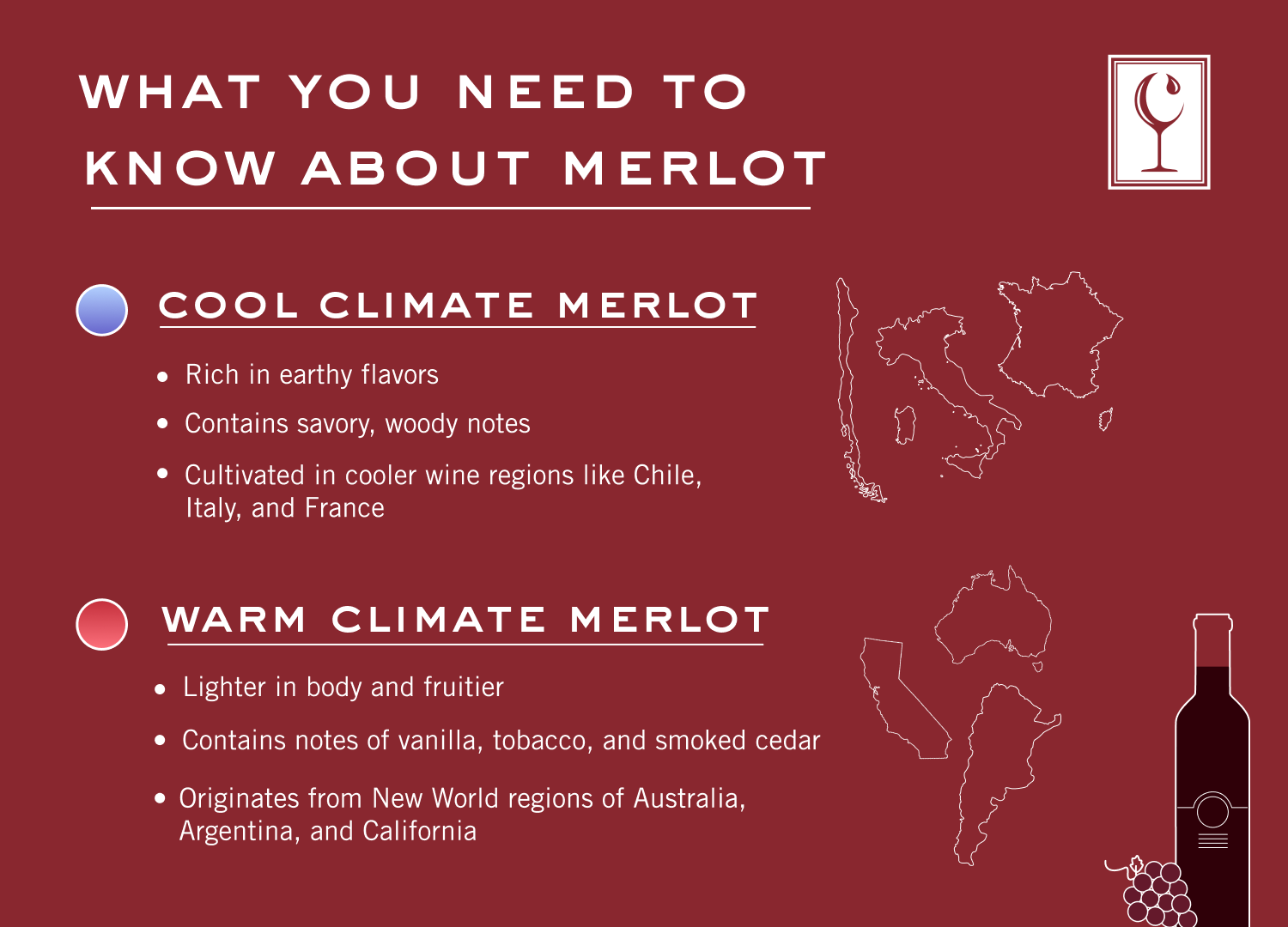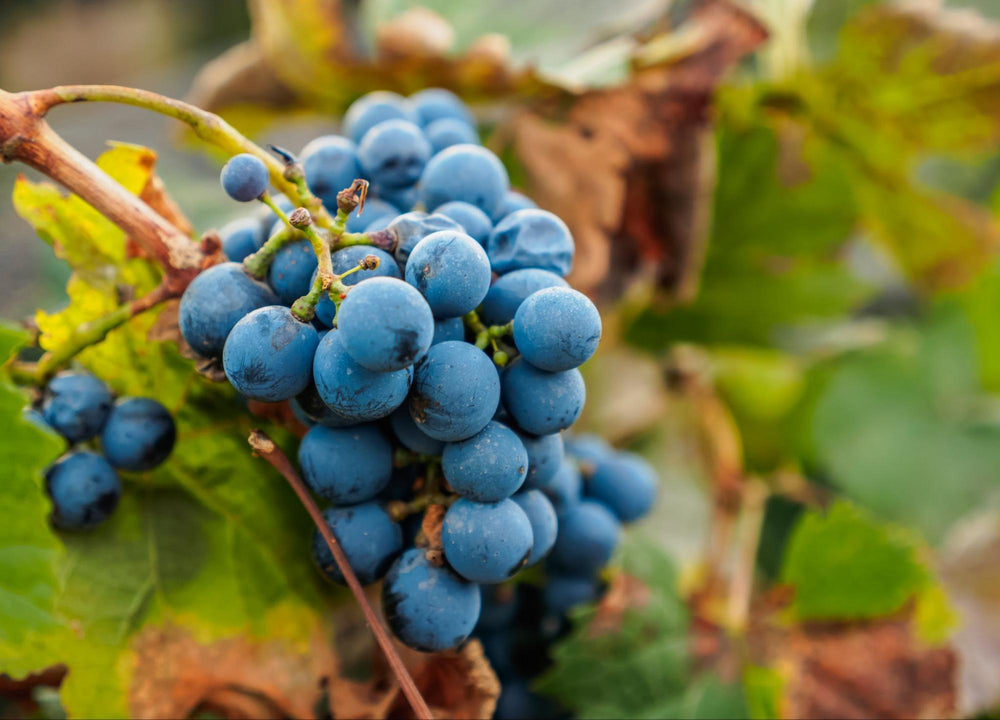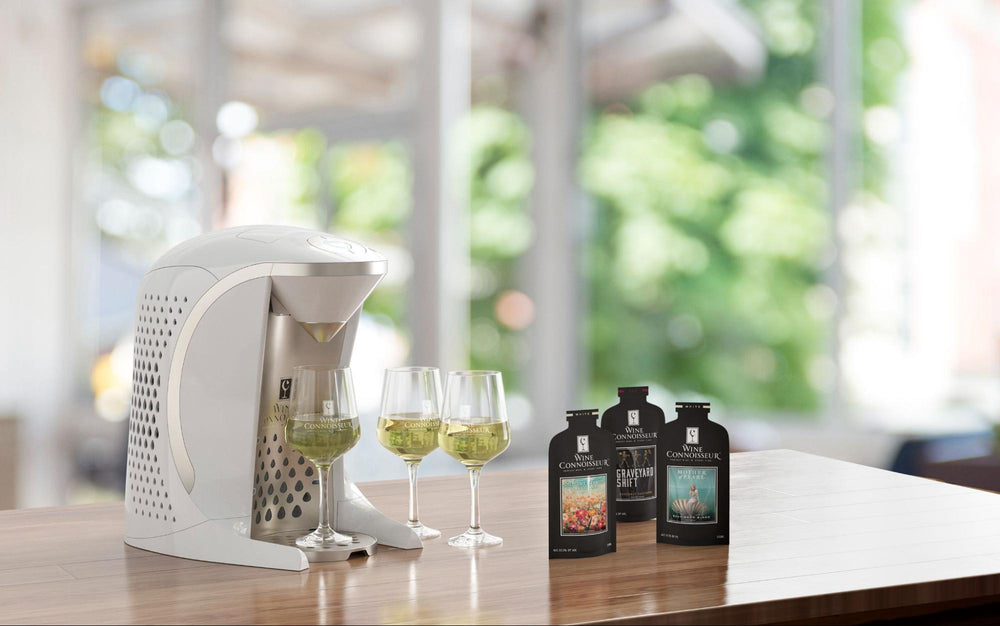Merlot Red Wine: Taste, History, and Food Pairing

“If anyone orders Merlot, I’m leaving. I am not drinking any Merlot.”
It’s the most widely grown grape in the esteemed wine region of Bordeaux. It’s fragrant. It’s fruity. Above all, it’s easy.
What’s not to like about Merlot?
Well, you’d have to ask Sideways protagonist, Miles Raymond. In 2004, Merlot’s popularity plummeted due to some choice words in Alexander Payne’s classic wine-related film, Sideways.
The protagonist preferred the delicate, temperamental nature of Pinot Noir, and many audience members seemingly agreed with him. Pinot Noir sales skyrocketed while Merlot’s wilted.
In recent years, Merlot has been making a comeback as younger generations realize that Merlot’s soft, fruity flavors deserve a fair sip.
Let’s explore this largely overlooked red varietal, diving into the history, flavors, and exceptional food pairings that make this French grape truly one of a kind.
What Is Merlot?
Merlot is a red grape originating from Bordeaux, France. It’s an offshoot of parent grapes, Cabernet Franc and Megdeleine Noire.
While Merlot is often featured as a blending grape, especially within Bordeaux, it can also make a fruity, easy-drinking single varietal.
Similar to Cabernet Sauvignon, Merlot’s flavor profile is fragrant and juicy, with distinct flavors of black cherry, plum, dark chocolate, and toasted vanilla. Structured tannins and moderate acidity make for a robust mouthfeel.
The History of Merlot
We can trace Merlot’s origins back to Bordeaux in 1784. Contemporary documents from the time refer to this unnamed grape as one of the best in the region.
In 1824, the grape finally earned its name “Merlot” due to the local blackbird, merlau. These birds took quite a liking to this new grape, especially as they grew ripe and juicy on the vine.
As the 19th century tumbled, the vine became one of the most widely grown throughout the Médoc. The French introduced it to the Swiss, who spread it to Venice, Italy. Within a few decades, Merlot became one of the premier grapes in all of Europe.
As red wine grew in popularity at the tail end of the twentieth century, Merlot thrived in the United States due to its fragrant, fruity flavors.
The Flavor Profile of Merlot
If you’ve never tasted this red varietal, you likely have many questions swirling in your head — How does merlot wine taste? Is merlot a dry wine or sweet wine?
Merlot can be summed up in one word — smooth.
While cool-climate Merlots taste quite distinct from warm-climate Merlots, nearly every glass of this French varietal is known for its easy-drinking versatility.

Cool Climate Merlot
Merlot grapes cultivated in cooler wine regions like Chile, Italy, and France are expressive and rich in earthy flavors. The wines are rich in tannins and heavily structured, making them often mistaken for Cabernet Sauvignon in a blind taste test.
Deep, juicy notes of raspberry and plum mingle with floral notes of violet and iris to create an especially fragrant sipping experience.
In these cooler climate varietals, you’ll discover savory, woody notes of mushroom, allspice, and dark chocolate.
Warm Climate Merlot
These warmer climate Merlots originating from New World regions of Australia, Argentina, and California are classically lighter in body and fruitier than their cool-climate cousins.
Tart fig contrasts fragrant raspberry and blackberry, while herbaceous, leafy notes play against cinnamon and mocha for a truly layered flavor profile.
Winemakers within these regions often age in oak for up to 2 years to impart delicious toasted notes of vanilla, tobacco, and smoked cedar.
To taste warm climate Merlot for yourself, take a trip through Napa Valley or the Barossa Valley in Australia.

Food Pairings For Merlot
If you’ve learned the foundations of food pairing, you know that bold wine flavors love to mix with ever bolder entreés.
If you’d like to design your choice around the Mediterranean origins of Merlot, seek out creamy penne pasta and toasty pizza dishes.
To infuse a bit more of the New World into your meal, seek out glazed barbeque ribs or savory bacon. Braised meats from Argentina or Chile work especially well with an herbaceous condiment like chimichurri.
While meat is a go-to dish for a medium-bodied red like Merlot, you can also opt for a vegetarian option like aged goat cheese or even the French classic, ratatouille.
Merlot’s flavor profile is one of the most forgiving in food pairing, so don’t be afraid to try something a bit unconventional!
Food Pairings to Avoid with Merlot
Like other medium-bodied red wines, Merlot can easily overwhelm lighter meats like tilapia and crisp salads.
On the other hand, spicy sauces and extra-hot entreés can overwhelm the fruity flavors of Merlot, so steer away from those intense Indian and Thai dishes.
For these dishes, you’d likely be better off serving yourself a glass of our North by Northwest Chardonnay.

4 Top Merlot Red Wine Regions
Since its origins over 200 years ago, European winemakers have spread Merlot all over the globe. Today, most glasses of Merlot can be traced back to these 4 historic wine regions.
Bordeaux
Bordeaux is where it all began. In the southern districts within this region, winemakers often blend Merlot with similar red varietals like Malbec or Cabernet.
In the more historic Right Bank, Merlot is often left as a single varietal to highlight its natural fruity flavors.
Chile
With the high altitudes of the Andes and rich, sandy soil, Chile is a perfect home for this originally French grape.
The Central Valley is the most popular wine region for easy-drinking, fruity bottles, while Maipo and Colchagua in the Maule Valley are home to some of the more expensive, critically acclaimed bottles.
United States
Merlot has made a home throughout the West Coast. It’s often found cultivated alongside Cabernet Sauvignon in Napa Valley and Sonoma, while the Central Coast is home to larger-scale wineries.
Critics have their eyes on Washington’s Columbia Valley as one of the most exciting Merlot regions in the New World today. In the cooler, eastern region of Washington, Merlot takes on even more bright acidity along with its signature, juicy fruit flavors.
Italy
Merlot makes a natural partner to classic Tuscan grapes like Cabernet Sauvignon and Sangiovese. It’s often blended together in a wine style affectionately referred to as “Super Tuscan.”

Seek Out The Best Merlot Wine
With its soft, fruity flavors and complex tannins, it’s easy to see why Merlot is making such a comeback in the wine world. It presents a pleasant alternative to Cabernet Sauvignon, and above all, it’s easy.
Sometimes, that’s all you want in a glass of wine.
There are so many different factors to consider in serving the perfect glass, whether it’s serving temperature, aeration, or even your glass shape.
Fortunately, there’s one device that wipes all those worries away.
The Wine Connoisseur effortlessly chills and aerates your favorite varietal to its optimal serving conditions. This personal sommelier makes it easy to find your perfect Chardonnay, Cabernet Sauvignon, or Merlot, all at the push of a button.
While you’re waiting for your order to arrive, read through our blog to learn all about classic red wine varietals and explore everything that Californian wine regions have to offer.



